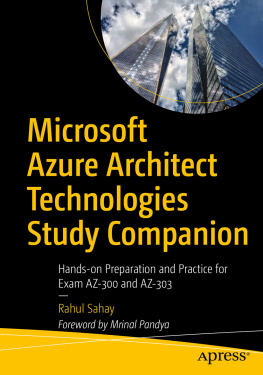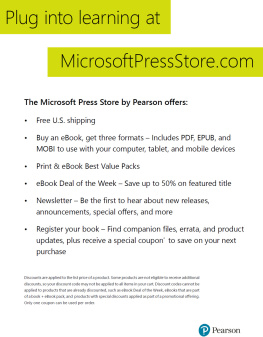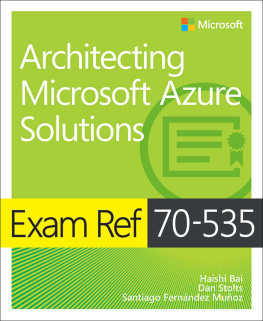David Voss - Azure AI Fundamentals: Study Guide and Practice Exam for the Microsoft AI-900 Exam
Here you can read online David Voss - Azure AI Fundamentals: Study Guide and Practice Exam for the Microsoft AI-900 Exam full text of the book (entire story) in english for free. Download pdf and epub, get meaning, cover and reviews about this ebook. year: 2020, genre: Children. Description of the work, (preface) as well as reviews are available. Best literature library LitArk.com created for fans of good reading and offers a wide selection of genres:
Romance novel
Science fiction
Adventure
Detective
Science
History
Home and family
Prose
Art
Politics
Computer
Non-fiction
Religion
Business
Children
Humor
Choose a favorite category and find really read worthwhile books. Enjoy immersion in the world of imagination, feel the emotions of the characters or learn something new for yourself, make an fascinating discovery.

- Book:Azure AI Fundamentals: Study Guide and Practice Exam for the Microsoft AI-900 Exam
- Author:
- Genre:
- Year:2020
- Rating:5 / 5
- Favourites:Add to favourites
- Your mark:
- 100
- 1
- 2
- 3
- 4
- 5
Azure AI Fundamentals: Study Guide and Practice Exam for the Microsoft AI-900 Exam: summary, description and annotation
We offer to read an annotation, description, summary or preface (depends on what the author of the book "Azure AI Fundamentals: Study Guide and Practice Exam for the Microsoft AI-900 Exam" wrote himself). If you haven't found the necessary information about the book — write in the comments, we will try to find it.
David Voss: author's other books
Who wrote Azure AI Fundamentals: Study Guide and Practice Exam for the Microsoft AI-900 Exam? Find out the surname, the name of the author of the book and a list of all author's works by series.
Azure AI Fundamentals: Study Guide and Practice Exam for the Microsoft AI-900 Exam — read online for free the complete book (whole text) full work
Below is the text of the book, divided by pages. System saving the place of the last page read, allows you to conveniently read the book "Azure AI Fundamentals: Study Guide and Practice Exam for the Microsoft AI-900 Exam" online for free, without having to search again every time where you left off. Put a bookmark, and you can go to the page where you finished reading at any time.
Font size:
Interval:
Bookmark:

for the Microsoft AI-900 Exam

- Prediction/Forecasting Workloads
- Anomaly Detection Workloads
- Computer Vision Workloads
- Natural Language Processing
- Conversational AI Workloads
- Which applicants are most likely to qualify for a loan?
- Which customers are likely to attend our new store opening?
- Which leads will likely purchase online instead of in the store?
- Identifying network traffic that has a signature of a network intrusion
- Verifying if values entered into a system are inaccurate
- Discovering abnormal patterns in employee time reporting
- Evaluating images of cancerous tumors
- Facial recognition
- Environmental impact analysis of satellite images
- Language translation software
- Chatbots
- Search, grammar, and spellcheck improvements
- The primary proofreader and editor for this study guide (grammerly.com)
- Identify Quality of Service information within an enormous technical article on IP voice design
- Identify entities of importance within legal documents and flag them for review
- Quickly provide the right answer to a customer question
Workload | Data |
Prediction/Forecasting | Binary (e.g. true/false, yes/no) |
Anomaly Detection | Imbalanced |
Computer Vision | Images, Video |
Natural Language Processing | Words, phrases, publications, wiki's |
Font size:
Interval:
Bookmark:
Similar books «Azure AI Fundamentals: Study Guide and Practice Exam for the Microsoft AI-900 Exam»
Look at similar books to Azure AI Fundamentals: Study Guide and Practice Exam for the Microsoft AI-900 Exam. We have selected literature similar in name and meaning in the hope of providing readers with more options to find new, interesting, not yet read works.
Discussion, reviews of the book Azure AI Fundamentals: Study Guide and Practice Exam for the Microsoft AI-900 Exam and just readers' own opinions. Leave your comments, write what you think about the work, its meaning or the main characters. Specify what exactly you liked and what you didn't like, and why you think so.




